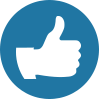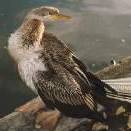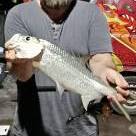-
Content Count
4,615 -
Joined
-
Last visited
-
Days Won
249
Reputation Activity
-
 doobie reacted to plankton in Land based Squid help
doobie reacted to plankton in Land based Squid help
Good advice mentioned above. Personally I never did very well squiding from metro jetties, and you're not going to get many squid off sandy bottom. Make sure your jag is getting down into the weed. If you want to stay local and catch heaps of squid my best advice would be get yourself a kayak.
-
 doobie reacted to Wert in Land based Squid help
doobie reacted to Wert in Land based Squid help
Weed and structure is a squids best friend, anywhere there is seagrass & sand patches in 2-5m or so of water you're in squid territory, add reef, ie a rocky shoreline, breakwater or jetty, and I guarantee you there will be squid passing through there regularly.
If you don't mind a bit of a drive I reckon the best land based squiding you will ever find is the Yorke Peninsula from Tickera around to Ardrossan, basically anywhere with the above ingredients around that stretch of coast, which is like 80% or more, will have good squid and be a nice place to be, also you will always have an option where you have the wind at your back which is very handy.
-
 doobie got a reaction from Sykes in Land based Squid help
doobie got a reaction from Sykes in Land based Squid help
It is just luck as is most fishing - one day the fish are at your spot - the next day = nothing.
Brighton jetty is good for squid as is Pt Noarlunga, Marino Rocks, sometimes off the rocks at Hallett Cove, Wirrina breakwater, Rapid Bay jetty, Second Valley jetty, Cape Jervis jetty.
Not sure about Semaphore jetty (don't seem to see many reports from there), but OH rocks is good.
Sometimes it is the colour of the jag that excites them too.
Weather can play apart, but generally a nice calm day and clear water (not murky) is good also.
-
 doobie reacted to Sykes in Land based Squid help
doobie reacted to Sykes in Land based Squid help
Hi guys,
I've recently caught my first ever squid and would love to chase a lot more, it was so much fun to target.
I am struggling to locate them however. Recently came back from an entire day at rapid bay/second valley and not a single touch. Perhaps just an off day, but it was a little frustrating.
My biggest question at the moment is how important is fishing in only areas with weed beds? I hear plenty of reports of people catching them from metro jetties, but no real weed until you hit Brighton. So is it still possible to be in for a shot from say the OH break water or semaphore jetties as they are my true locals? Always happy to travel but harder to find the time to make the drive over Yorkes or south.
Cheers.
-
 doobie got a reaction from yellow door 1 in Just running some pliers through the braid cutting test
doobie got a reaction from yellow door 1 in Just running some pliers through the braid cutting test
Good test YD1.
I've never found any 'good' cutting pliers for braid. Even the special braid cutters are usually useless.
So I generally stick to a sharp knife - not perfect all the time, but pretty good.
-
 doobie reacted to yellow door 1 in Just running some pliers through the braid cutting test
doobie reacted to yellow door 1 in Just running some pliers through the braid cutting test
Yeah the Snub nose blue Berkleys are the best I have found -
But having hook removal pliers, that can also cut untensioned braid has become my minimum standard for pliers these days
-

-
 doobie reacted to yellow door 1 in 4 piece travel rod recommendations
doobie reacted to yellow door 1 in 4 piece travel rod recommendations
I swear those handlers use rod tubes to practice their caber tossing😉
Some cushion foam plugs - (far right) are a useful addition
-
 doobie reacted to Hugo in 4 piece travel rod recommendations
doobie reacted to Hugo in 4 piece travel rod recommendations
Shimano Raider travel rods are good value for money. PVC tube is the best option for protecting and storing rods when travelling and is almost baggage handler proof! Bone and Nitro travel rods are better quality but way more expensive.
-
 doobie reacted to solidute in 4 piece travel rod recommendations
doobie reacted to solidute in 4 piece travel rod recommendations
We're heading to sunny Qld for 5 weeks from late June, and I'd like to take along a compact/travel rod in case we find some spare time to wet a line, will only be landbased.
Don't want to spend a fortune as it'll be stored in a camper and may cop a bit of damage. Would prefer something I could easily replace from a BCF/Anaconda if needs be.
Thinking a 4 piece (dunno why 4 piece, other than breaks down to a smaller size, just popped in my head) would be better than telescopic but open to ideas.
Obviously with no Qld fishing knowledge and copious options online it's a bit confusing to know what to look at so keen to hear people's thoughts
Cheers
Sent from my SM-A525F using Tapatalk
-
 doobie reacted to solidute in 4 piece travel rod recommendations
doobie reacted to solidute in 4 piece travel rod recommendations
Haha we're traveling by road and with a camper trailer. Baggage handlers be damned
I'll check out those Shimano raiders. Cheers
Sent from my SM-A525F using Tapatalk
-
 doobie got a reaction from Rybak in WINTER GARFISH
doobie got a reaction from Rybak in WINTER GARFISH
Gar are definitely bigger in Winter and although I have no idea on many of the questions you ask Des, I still always use a float.
On my local jetty at Pt Noarlunga, Gar are mostly caught towards the end of the jetty during warmer months (all on floats). Although the Gar can be caught in the shallower water as well, but are smaller.
It is also better to have some ripple on the water and depths of hook will vary depending where the Gar may be holding on the day.
Over the weedy spots you'll generally have more success too.
Burley is always well worth using to 'bring in' the Gar. You can make up all sorts of concoctions but I just use cheap chicken pellets mixed with some tuna oil. The pellets slowly break down. Or they can be soaked night before to soften quicker. I also use old bread (processed up) mixed with tuna oil bit of curry. (some people use canola oil cat tuna tins mixed into burley).
Have a good burley stream going but don't overfeed them - once they come in, lighten off the burley to a tickle.
I only use 1 hook as 2 hooks can cause too many tangles with Gar. Most ppl use a hook size 10/12 long shank. Long shank is good for hook retrieval although I use 'Diiachi' size 12/14 small medium shank.
During Winter, the deeper depths of the jetty don't produce as many Gar (on a float), but successful catches are caught towards the shallows on a float. There is no need to use a sinker/cork as the float/leader is enough due to shallower water depth. If fishing toward the end of the jetty, then as Rybak mentions, a sinker/cork combo would be useful.
Gents are a great bait with 'long life' available mostly everywhere and about 350 gents in a container. Keep in the fridge (I put container in a zip lock also - just in case of a couple escapees), where they become docile. I take out once a week a give a little water spray and let them move around for a bit then back in the fridge - seems to keep them even longer.
Sometimes Gar will not touch a gent, so other baits such as a slither of chicken, slither of red meat or slither of Gar flesh can work also. A couple of very successful fishos on the jetty use dough - their little secret ingredients work very well.
And, always best to have wind at your back for better casting and current in same direction - to keep the float 'out there'.
When Gar are finicky to take a bait, it is worth trying different methods to excite them into 'attacking'.
That can be slight jerks of your rod to give that slight movement of the bait - or a very slow retrieve, stop, slow retrieve - or jerk, slow retrieve, stop, slow retrieve - anything else you can try to excite them etc.
If wind/current is in your favor, you can also try just the hook without a float/sinker/cork etc.
Many a time you will see them in schools and all around your bait, but no matter what you do, they will not commit. When you throw in a little burley, they will take that, but not your bait. If nothing works to hook them, just enjoy the day on the water
Also, if you intend to return any Gar (undersize, too thin etc), always handle them with care due to their very delicate scale.
Using a wet hand (or wet cloth) whilst holding them will help reduce loss of scales.
For the keepers, hold Gar around head/gills and with other hand, grip and run hand down the flesh - this will take off much of the scales and easier to clean at home. Also, run your thumb down the stomach towards the bum which will push out most innards - point towards water and not yourself Acts as a bit of burley too.
Gar is one of the tastiest you will enjoy - I rate them better than KGW. And once you start bringing some home, you'll soon get the hang of butterflying them (although single fillets are ok, they can be a bit small at times).
Hope that helps and look forward to your catches
-

-
 doobie got a reaction from imfishn in WINTER GARFISH
doobie got a reaction from imfishn in WINTER GARFISH
Gar are definitely bigger in Winter and although I have no idea on many of the questions you ask Des, I still always use a float.
On my local jetty at Pt Noarlunga, Gar are mostly caught towards the end of the jetty during warmer months (all on floats). Although the Gar can be caught in the shallower water as well, but are smaller.
It is also better to have some ripple on the water and depths of hook will vary depending where the Gar may be holding on the day.
Over the weedy spots you'll generally have more success too.
Burley is always well worth using to 'bring in' the Gar. You can make up all sorts of concoctions but I just use cheap chicken pellets mixed with some tuna oil. The pellets slowly break down. Or they can be soaked night before to soften quicker. I also use old bread (processed up) mixed with tuna oil bit of curry. (some people use canola oil cat tuna tins mixed into burley).
Have a good burley stream going but don't overfeed them - once they come in, lighten off the burley to a tickle.
I only use 1 hook as 2 hooks can cause too many tangles with Gar. Most ppl use a hook size 10/12 long shank. Long shank is good for hook retrieval although I use 'Diiachi' size 12/14 small medium shank.
During Winter, the deeper depths of the jetty don't produce as many Gar (on a float), but successful catches are caught towards the shallows on a float. There is no need to use a sinker/cork as the float/leader is enough due to shallower water depth. If fishing toward the end of the jetty, then as Rybak mentions, a sinker/cork combo would be useful.
Gents are a great bait with 'long life' available mostly everywhere and about 350 gents in a container. Keep in the fridge (I put container in a zip lock also - just in case of a couple escapees), where they become docile. I take out once a week a give a little water spray and let them move around for a bit then back in the fridge - seems to keep them even longer.
Sometimes Gar will not touch a gent, so other baits such as a slither of chicken, slither of red meat or slither of Gar flesh can work also. A couple of very successful fishos on the jetty use dough - their little secret ingredients work very well.
And, always best to have wind at your back for better casting and current in same direction - to keep the float 'out there'.
When Gar are finicky to take a bait, it is worth trying different methods to excite them into 'attacking'.
That can be slight jerks of your rod to give that slight movement of the bait - or a very slow retrieve, stop, slow retrieve - or jerk, slow retrieve, stop, slow retrieve - anything else you can try to excite them etc.
If wind/current is in your favor, you can also try just the hook without a float/sinker/cork etc.
Many a time you will see them in schools and all around your bait, but no matter what you do, they will not commit. When you throw in a little burley, they will take that, but not your bait. If nothing works to hook them, just enjoy the day on the water
Also, if you intend to return any Gar (undersize, too thin etc), always handle them with care due to their very delicate scale.
Using a wet hand (or wet cloth) whilst holding them will help reduce loss of scales.
For the keepers, hold Gar around head/gills and with other hand, grip and run hand down the flesh - this will take off much of the scales and easier to clean at home. Also, run your thumb down the stomach towards the bum which will push out most innards - point towards water and not yourself Acts as a bit of burley too.
Gar is one of the tastiest you will enjoy - I rate them better than KGW. And once you start bringing some home, you'll soon get the hang of butterflying them (although single fillets are ok, they can be a bit small at times).
Hope that helps and look forward to your catches
-
 doobie got a reaction from Des in WINTER GARFISH
doobie got a reaction from Des in WINTER GARFISH
Gar are definitely bigger in Winter and although I have no idea on many of the questions you ask Des, I still always use a float.
On my local jetty at Pt Noarlunga, Gar are mostly caught towards the end of the jetty during warmer months (all on floats). Although the Gar can be caught in the shallower water as well, but are smaller.
It is also better to have some ripple on the water and depths of hook will vary depending where the Gar may be holding on the day.
Over the weedy spots you'll generally have more success too.
Burley is always well worth using to 'bring in' the Gar. You can make up all sorts of concoctions but I just use cheap chicken pellets mixed with some tuna oil. The pellets slowly break down. Or they can be soaked night before to soften quicker. I also use old bread (processed up) mixed with tuna oil bit of curry. (some people use canola oil cat tuna tins mixed into burley).
Have a good burley stream going but don't overfeed them - once they come in, lighten off the burley to a tickle.
I only use 1 hook as 2 hooks can cause too many tangles with Gar. Most ppl use a hook size 10/12 long shank. Long shank is good for hook retrieval although I use 'Diiachi' size 12/14 small medium shank.
During Winter, the deeper depths of the jetty don't produce as many Gar (on a float), but successful catches are caught towards the shallows on a float. There is no need to use a sinker/cork as the float/leader is enough due to shallower water depth. If fishing toward the end of the jetty, then as Rybak mentions, a sinker/cork combo would be useful.
Gents are a great bait with 'long life' available mostly everywhere and about 350 gents in a container. Keep in the fridge (I put container in a zip lock also - just in case of a couple escapees), where they become docile. I take out once a week a give a little water spray and let them move around for a bit then back in the fridge - seems to keep them even longer.
Sometimes Gar will not touch a gent, so other baits such as a slither of chicken, slither of red meat or slither of Gar flesh can work also. A couple of very successful fishos on the jetty use dough - their little secret ingredients work very well.
And, always best to have wind at your back for better casting and current in same direction - to keep the float 'out there'.
When Gar are finicky to take a bait, it is worth trying different methods to excite them into 'attacking'.
That can be slight jerks of your rod to give that slight movement of the bait - or a very slow retrieve, stop, slow retrieve - or jerk, slow retrieve, stop, slow retrieve - anything else you can try to excite them etc.
If wind/current is in your favor, you can also try just the hook without a float/sinker/cork etc.
Many a time you will see them in schools and all around your bait, but no matter what you do, they will not commit. When you throw in a little burley, they will take that, but not your bait. If nothing works to hook them, just enjoy the day on the water
Also, if you intend to return any Gar (undersize, too thin etc), always handle them with care due to their very delicate scale.
Using a wet hand (or wet cloth) whilst holding them will help reduce loss of scales.
For the keepers, hold Gar around head/gills and with other hand, grip and run hand down the flesh - this will take off much of the scales and easier to clean at home. Also, run your thumb down the stomach towards the bum which will push out most innards - point towards water and not yourself Acts as a bit of burley too.
Gar is one of the tastiest you will enjoy - I rate them better than KGW. And once you start bringing some home, you'll soon get the hang of butterflying them (although single fillets are ok, they can be a bit small at times).
Hope that helps and look forward to your catches
-
 doobie reacted to Meppstas in My second best trout of the 2021/22 season. (short video)
doobie reacted to Meppstas in My second best trout of the 2021/22 season. (short video)
Thanks doobie, it did take my breath too as I had to make my way downstream in the fast water to try and keep up with it. Using a ultra thin 4 lb mono I was a little worried the line would part ways at the knot, thankfully it held.
cheers
Adrian
-
 doobie got a reaction from Meppstas in My second best trout of the 2021/22 season. (short video)
doobie got a reaction from Meppstas in My second best trout of the 2021/22 season. (short video)
Lovely size Trout and it took your breath a bit by the sounds
-
 doobie reacted to Meppstas in My second best trout of the 2021/22 season. (short video)
doobie reacted to Meppstas in My second best trout of the 2021/22 season. (short video)
This is just a short video of the second best trout that I've caught in a river this season. I took a gamble filming it with my Canon camera while holding the trout rod in my left hand, thankfully the trout made it into the net. It certainly tested out the fine (0.15mm diameter) Platypus Pulse ultra thin 4lb premium mono line too.
Thanks for watching.. This video is HD make sure you change setting to suit..
cheers Adrian.
-
 doobie got a reaction from gregtech in WINTER GARFISH
doobie got a reaction from gregtech in WINTER GARFISH
Gar are definitely bigger in Winter and although I have no idea on many of the questions you ask Des, I still always use a float.
On my local jetty at Pt Noarlunga, Gar are mostly caught towards the end of the jetty during warmer months (all on floats). Although the Gar can be caught in the shallower water as well, but are smaller.
It is also better to have some ripple on the water and depths of hook will vary depending where the Gar may be holding on the day.
Over the weedy spots you'll generally have more success too.
Burley is always well worth using to 'bring in' the Gar. You can make up all sorts of concoctions but I just use cheap chicken pellets mixed with some tuna oil. The pellets slowly break down. Or they can be soaked night before to soften quicker. I also use old bread (processed up) mixed with tuna oil bit of curry. (some people use canola oil cat tuna tins mixed into burley).
Have a good burley stream going but don't overfeed them - once they come in, lighten off the burley to a tickle.
I only use 1 hook as 2 hooks can cause too many tangles with Gar. Most ppl use a hook size 10/12 long shank. Long shank is good for hook retrieval although I use 'Diiachi' size 12/14 small medium shank.
During Winter, the deeper depths of the jetty don't produce as many Gar (on a float), but successful catches are caught towards the shallows on a float. There is no need to use a sinker/cork as the float/leader is enough due to shallower water depth. If fishing toward the end of the jetty, then as Rybak mentions, a sinker/cork combo would be useful.
Gents are a great bait with 'long life' available mostly everywhere and about 350 gents in a container. Keep in the fridge (I put container in a zip lock also - just in case of a couple escapees), where they become docile. I take out once a week a give a little water spray and let them move around for a bit then back in the fridge - seems to keep them even longer.
Sometimes Gar will not touch a gent, so other baits such as a slither of chicken, slither of red meat or slither of Gar flesh can work also. A couple of very successful fishos on the jetty use dough - their little secret ingredients work very well.
And, always best to have wind at your back for better casting and current in same direction - to keep the float 'out there'.
When Gar are finicky to take a bait, it is worth trying different methods to excite them into 'attacking'.
That can be slight jerks of your rod to give that slight movement of the bait - or a very slow retrieve, stop, slow retrieve - or jerk, slow retrieve, stop, slow retrieve - anything else you can try to excite them etc.
If wind/current is in your favor, you can also try just the hook without a float/sinker/cork etc.
Many a time you will see them in schools and all around your bait, but no matter what you do, they will not commit. When you throw in a little burley, they will take that, but not your bait. If nothing works to hook them, just enjoy the day on the water
Also, if you intend to return any Gar (undersize, too thin etc), always handle them with care due to their very delicate scale.
Using a wet hand (or wet cloth) whilst holding them will help reduce loss of scales.
For the keepers, hold Gar around head/gills and with other hand, grip and run hand down the flesh - this will take off much of the scales and easier to clean at home. Also, run your thumb down the stomach towards the bum which will push out most innards - point towards water and not yourself Acts as a bit of burley too.
Gar is one of the tastiest you will enjoy - I rate them better than KGW. And once you start bringing some home, you'll soon get the hang of butterflying them (although single fillets are ok, they can be a bit small at times).
Hope that helps and look forward to your catches
-
 doobie got a reaction from Softy in WINTER GARFISH
doobie got a reaction from Softy in WINTER GARFISH
Gar are definitely bigger in Winter and although I have no idea on many of the questions you ask Des, I still always use a float.
On my local jetty at Pt Noarlunga, Gar are mostly caught towards the end of the jetty during warmer months (all on floats). Although the Gar can be caught in the shallower water as well, but are smaller.
It is also better to have some ripple on the water and depths of hook will vary depending where the Gar may be holding on the day.
Over the weedy spots you'll generally have more success too.
Burley is always well worth using to 'bring in' the Gar. You can make up all sorts of concoctions but I just use cheap chicken pellets mixed with some tuna oil. The pellets slowly break down. Or they can be soaked night before to soften quicker. I also use old bread (processed up) mixed with tuna oil bit of curry. (some people use canola oil cat tuna tins mixed into burley).
Have a good burley stream going but don't overfeed them - once they come in, lighten off the burley to a tickle.
I only use 1 hook as 2 hooks can cause too many tangles with Gar. Most ppl use a hook size 10/12 long shank. Long shank is good for hook retrieval although I use 'Diiachi' size 12/14 small medium shank.
During Winter, the deeper depths of the jetty don't produce as many Gar (on a float), but successful catches are caught towards the shallows on a float. There is no need to use a sinker/cork as the float/leader is enough due to shallower water depth. If fishing toward the end of the jetty, then as Rybak mentions, a sinker/cork combo would be useful.
Gents are a great bait with 'long life' available mostly everywhere and about 350 gents in a container. Keep in the fridge (I put container in a zip lock also - just in case of a couple escapees), where they become docile. I take out once a week a give a little water spray and let them move around for a bit then back in the fridge - seems to keep them even longer.
Sometimes Gar will not touch a gent, so other baits such as a slither of chicken, slither of red meat or slither of Gar flesh can work also. A couple of very successful fishos on the jetty use dough - their little secret ingredients work very well.
And, always best to have wind at your back for better casting and current in same direction - to keep the float 'out there'.
When Gar are finicky to take a bait, it is worth trying different methods to excite them into 'attacking'.
That can be slight jerks of your rod to give that slight movement of the bait - or a very slow retrieve, stop, slow retrieve - or jerk, slow retrieve, stop, slow retrieve - anything else you can try to excite them etc.
If wind/current is in your favor, you can also try just the hook without a float/sinker/cork etc.
Many a time you will see them in schools and all around your bait, but no matter what you do, they will not commit. When you throw in a little burley, they will take that, but not your bait. If nothing works to hook them, just enjoy the day on the water
Also, if you intend to return any Gar (undersize, too thin etc), always handle them with care due to their very delicate scale.
Using a wet hand (or wet cloth) whilst holding them will help reduce loss of scales.
For the keepers, hold Gar around head/gills and with other hand, grip and run hand down the flesh - this will take off much of the scales and easier to clean at home. Also, run your thumb down the stomach towards the bum which will push out most innards - point towards water and not yourself Acts as a bit of burley too.
Gar is one of the tastiest you will enjoy - I rate them better than KGW. And once you start bringing some home, you'll soon get the hang of butterflying them (although single fillets are ok, they can be a bit small at times).
Hope that helps and look forward to your catches
-
 doobie reacted to Wert in WINTER GARFISH
doobie reacted to Wert in WINTER GARFISH
For me I find gar are a bit slower in winter as they don't seem as densly schooled up, also I fish the same general locations but find heading deeper can be better.
I tend to be more land (jetty) based in winter, I like the old combo burley float & pencil float rig and a long 2m+ trace. It's otherwise normal gar fishing for baits, burley wind and tides. Great way to pass a winter's day and score a delicious feed, the real trick will be getting through the Tommies who love the colder months but that's a pretty good "problem" to have I reckon.
-
 doobie got a reaction from Wert in WINTER GARFISH
doobie got a reaction from Wert in WINTER GARFISH
Gar are definitely bigger in Winter and although I have no idea on many of the questions you ask Des, I still always use a float.
On my local jetty at Pt Noarlunga, Gar are mostly caught towards the end of the jetty during warmer months (all on floats). Although the Gar can be caught in the shallower water as well, but are smaller.
It is also better to have some ripple on the water and depths of hook will vary depending where the Gar may be holding on the day.
Over the weedy spots you'll generally have more success too.
Burley is always well worth using to 'bring in' the Gar. You can make up all sorts of concoctions but I just use cheap chicken pellets mixed with some tuna oil. The pellets slowly break down. Or they can be soaked night before to soften quicker. I also use old bread (processed up) mixed with tuna oil bit of curry. (some people use canola oil cat tuna tins mixed into burley).
Have a good burley stream going but don't overfeed them - once they come in, lighten off the burley to a tickle.
I only use 1 hook as 2 hooks can cause too many tangles with Gar. Most ppl use a hook size 10/12 long shank. Long shank is good for hook retrieval although I use 'Diiachi' size 12/14 small medium shank.
During Winter, the deeper depths of the jetty don't produce as many Gar (on a float), but successful catches are caught towards the shallows on a float. There is no need to use a sinker/cork as the float/leader is enough due to shallower water depth. If fishing toward the end of the jetty, then as Rybak mentions, a sinker/cork combo would be useful.
Gents are a great bait with 'long life' available mostly everywhere and about 350 gents in a container. Keep in the fridge (I put container in a zip lock also - just in case of a couple escapees), where they become docile. I take out once a week a give a little water spray and let them move around for a bit then back in the fridge - seems to keep them even longer.
Sometimes Gar will not touch a gent, so other baits such as a slither of chicken, slither of red meat or slither of Gar flesh can work also. A couple of very successful fishos on the jetty use dough - their little secret ingredients work very well.
And, always best to have wind at your back for better casting and current in same direction - to keep the float 'out there'.
When Gar are finicky to take a bait, it is worth trying different methods to excite them into 'attacking'.
That can be slight jerks of your rod to give that slight movement of the bait - or a very slow retrieve, stop, slow retrieve - or jerk, slow retrieve, stop, slow retrieve - anything else you can try to excite them etc.
If wind/current is in your favor, you can also try just the hook without a float/sinker/cork etc.
Many a time you will see them in schools and all around your bait, but no matter what you do, they will not commit. When you throw in a little burley, they will take that, but not your bait. If nothing works to hook them, just enjoy the day on the water
Also, if you intend to return any Gar (undersize, too thin etc), always handle them with care due to their very delicate scale.
Using a wet hand (or wet cloth) whilst holding them will help reduce loss of scales.
For the keepers, hold Gar around head/gills and with other hand, grip and run hand down the flesh - this will take off much of the scales and easier to clean at home. Also, run your thumb down the stomach towards the bum which will push out most innards - point towards water and not yourself Acts as a bit of burley too.
Gar is one of the tastiest you will enjoy - I rate them better than KGW. And once you start bringing some home, you'll soon get the hang of butterflying them (although single fillets are ok, they can be a bit small at times).
Hope that helps and look forward to your catches
-
 doobie reacted to Des in FLOAT FISHING FLATHEAD
doobie reacted to Des in FLOAT FISHING FLATHEAD
BYCATCH to MAIN CATCH … Season’s Change to FLATHEAD
.
I have picked up a Flathead on each of my last 4 Yellow Fin Whiting lure sessions.
There are still plenty of YFW about for the whiting bait angler, however they have slowed up for the whiting lure fisherman.
The water is cooling a bit for YFW on lures. But is also the reason for the increasing presence of the Flathead.
The cooler Autumn water temperatures now have the ambient conditions to hold a larger number of baitfish in the shallows.
And along with the baitfish arrive a lot more Flathead, in these cooler waters of Autumn.
.
UNCONVENTIONAL TACTICS
I have always taken a skeptical view, of some assertions made by some fishing experts.
It’s best to do your own trials and testing and arrive at what works for you … for the areas that you fish.
There are claims of many must do techniques. Most based, I feel on false assumptions. And in the main anglers have quietly and benignly accepted them.
With Yellow Fin Whiting there was even an ‘expert” that asserted a surface lure mimicked a fleeing Benthic (bottom) dwelling Clicker on the surface !!! All fishing techniques have to consider the target species, their morphology, behavioural traits, their prey and the habitat in which it has all evolved. So when it comes to some “expert” techniques, it must measure up against these factors. When Flathead fishing with soft plastics, people have often claimed; “Always bounce the soft plastic in the sand to create a puff of sand to attract a Flathead”
… Nah! Nah! Nah! Never !!!! This has a detrimental affect, when I fish wading the shallow sandflats.
.
I employ some unconventional tactics for catching Flathead … I float fish them.
Do not bother bouncing lures along the sand. I have FLIP-SIDED the whole concept and suspend Soft Plastics and Bait under a Float. Always presenting them above the Flathead’s eyes !! It is where they can see it the easiest and react the most. Their Strike zone. Their area of Binocular vision.
.
Having viewed underwater footage of FH taking soft plastics. I noticed they were repetitively taken at the top of the lift when the SP was bounced. Always well above and out in front of their eyes. In their “Binocular Vision Strike Zone”. So I decided I may as well put my Soft Plastics there in the first place. Drawing it past them … under a float. I do not use any jig-heads.
.
Some more alert experts are now agreeing, that in fact disturbing the sand in front of Flathead is counter productive.
Karl Attenborough of the “Sand Flat Fishing Australia” YouTube channel says: “Touching the sand with your lure in shallow water spooks the fish.”
Refer: 9.35min in this video: https://www.youtube.com/watch?v=2NHJ02NUoiQ
Or in this Doc Lures Podcast : https://doclures.com/nsw-mid-north-coast-flathead-attenborough/ … Refer ~ 17min 10sec onwards.
.
As fisher-people we are always trying to present, a favourite food in the most irresistible and obvious manner, to our target species.
I have been floating Baits, Gulp Minnows and Jerk Shads under a small split turnip float for a long time. With great success.
.
MORPHOLOGY
Prey usually have eyes on the sides of their head so they have a large field of view, from which to avoid predators. Predators usually have eyes in front of their head so they have better depth perception. Benthic predators, like Flathead have eyes arranged so they have a binocular view of what is above them as they lie on the bottom. Their field of vision is strongly biased to a bait or lure being presented out front and above them. Rather than it bouncing in the sand ahead of them.
These great videos clearly illustrate the Flathead eye placement and function:
https://www.youtube.com/watch?v=nC7Ig4NJmtE
https://www.youtube.com/watch?v=xrCjZJWGFHI
.
HABITAT
The other most important factor for using floating baits and lures is the sandflat Habitat in which the Flathead hold.
In the upper gulf sandflats that I fish, Flathead are most often found on; broken weedy ground, in and alongside weed filled channels, or alongside mangrove edges full of aerial roots. Here they lay and wait to ambush any prey that passes above. It is very hard to get a weed free, snag free retrieve over this terrain. So the most effective method is to present and draw a bait or lure over them, suspended under a float. There are some suitable floating lures, but their trebles foul easily on the floating ribbon weed.
Flathead most commonly lie on the leeward side of a weed hump or structure in a strong run off. I rarely come across them on clear open sand flats. They have a preference for the bigger and faster run off tides. I find the best strategy is an overhead bait/lure presentation, suspended by a float, drawn across their likely lies behind structure.
The weed line or “blue line” which can also channel a stronger flow of water, will also hold them. The irregular weed line will frequently obstruct and hide your lure if you are working the bottom. Under a float, your offering can easily work, over, across, in and out of the weed line, with out fouling. Weedless rigs worked lower are never as effective for me.
.
RIGS & LURES
Today the very successful floating Glide baits and swim bait lures, do exactly that, swim above the eyes of the Flathead. Stay out of the weed and never touch the sand. I have yet to given them a try.
My favourite lure is Rapala Shadow Rap a floating lure with a small bib and a shallow dive.
It is interesting to note how many Flathead have been taken on a floating Squid jig.
But I have taken the most Flathead (along with X Large YFW) on Soft Plastic Minnows or Jerkshads simply fed onto a #4 long shank hook that I have been using for YFW. under a float.
Tight Lines.
Cheers, Des
-
 doobie reacted to MIKECATTS in Southern Garfish - Best Baits. Can You Match the Hatch?
doobie reacted to MIKECATTS in Southern Garfish - Best Baits. Can You Match the Hatch?
2 weeks ago at lower Yorks. The gar only wanted Gar.... Tried all the usual baits and kept going back to gar.. Fishing is weird.. There were plenty about in ankle deep water..
-
 doobie reacted to MAH in Southern Garfish - Feeding Habits of South Australian Populations.
doobie reacted to MAH in Southern Garfish - Feeding Habits of South Australian Populations.
This information is based on the Honours thesis undertaken by Jason Earl in 2007, through Flinders University. All credit goes Jason for this knowledge.
The information is based upon samples of southern sea garfish that were collected at two locations in Gulf St. Vincent between March and July 2007. Most sampling was conducted at Port Parham, while fewer samples were also taken from Bay of Shoals, Kangaroo Island. Garfish were sampled for this study in two ways: they were purchased from commercial fishers after haul-net capture; and captured at night using dab nets. Hook and line were not used to capture the fish, as the use of foreign dietary items such as burley and bait would have disrupted the analysis of dietary composition. A total of 20 sampling events were undertaken.
The study found that the size of the mouth’s gape, the length of the beak and gut length were all proportional to fish size and these proportions are consistent over time, which does not suggest a major change in the feeding biology from juvenile stages through to adulthood.
The primary dietary components identified were seagrasses of the family Zosteraceae and planktonic amphipods.
Seagrasses were consumed in much greater volume than any other dietary item, followed by amphipods that were also consumed in high volumes. The high volumes of seagrass, may be due to the low nutritional value of seagrass and the inefficient digestion. To compensate for this, southern sea garfish may have to continually consume seagrass to maintain adequate nutrient absorption. Examining the gut contents showed the green, heavily macerated condition of the seagrass was consistently fresh throughout the entire study suggesting that rather than consuming floating detached seagrass fronds, as previously documented , the species may be grazing on live fronds. This assumption is supported by the observations of a commercial fisherman of Port Parham who regularly observed the species actively swimming through live fronds of the zosteraceaen seagrass beds in the area. If this is actually occurring it suggests that the fish are actively biting off seagrass fronds.
Other invertebrates such as polychaetes, insects and other crustaceans were a regular part of the diet, but only in smaller volumes.
Southern sea garfish appear to be selectively choosing their main dietary components, of zosteracean seagrass and amphipods.
Given the diversity of algae and different species of seagrasses distributed throughout the inter- and subtidal areas of the northern Gulf St. Vincent, the garfish that were sampled had exclusively consumed Zosteraceaen seagrasses.
Similarly, plankton tows that were done in the main sampling area at Port Parham revealed many types of hyperbenthic invertebrates available for consumption, yet the consistent consumption of large volumes of amphipods suggests that they were selected by the fish over other food.
The feeding patterns of southern sea garfish followed a strong diurnal cycle; consuming seagrass fronds during the day, to predation of hyperbenthic planktonic invertebrates during the night. The shift from seagrass, which is an unlimited, highly accessible resource, to the nocturnal consumption of invertebrates, coincided with significantly higher abundances of invertebrates in the water column during the night. Hyperbenthic invertebrate species occupy seagrass beds or the sediment during the day to avoid predation and then migrate vertically up into the water column during the night, to facilitate feeding and reproduction.
The study was conducted over autumn and winter and throughout both seasons the diets were dominated by seagrass during the day, before shifting to planktonic invertebrates during the night. Amphipods were the main invertebrates consumed during the night in both seasons while ostracods, cumaceans and nereidid polychaetes were also consumed at various stages. The most significant difference in dietary composition between seasons was the consumption of cirratulid polychaete worms during the early hours of the morning during winter. This species of worm was not apparent in the guts during autumn, but during winter was a very important component of the diet. It is not known whether the worms were excavated by the fish from the substrate or had migrated into the water column.
The feeding habits of the South Australian population of garfish are consistent with the findings for the Victorian population, however comparison between the diets of fish from Port Parham and Kangaroo Island provided some indication for regional variation. While nocturnal predation of amphipods was evident at midnight in fish captured from Port Parham, samples obtained from The Bay of Shoals, Kangaroo Island at the same time of the night contained large volumes of zosteracean seagrass and indicates the results from one area are not directly applicable to other areas where the availability of dietary components may differ.







.thumb.jpg.69e5c188162e2fa63990ae43a94ba91c.jpg)


